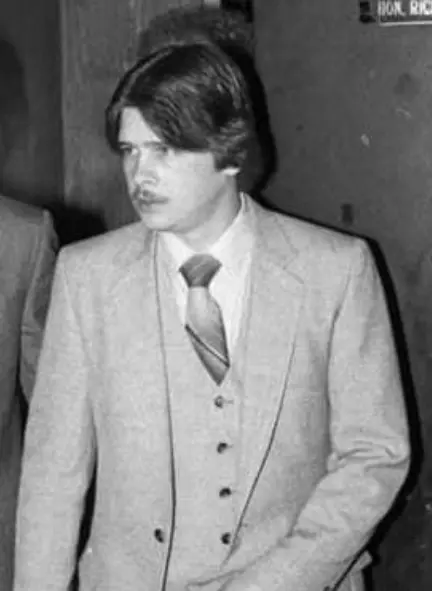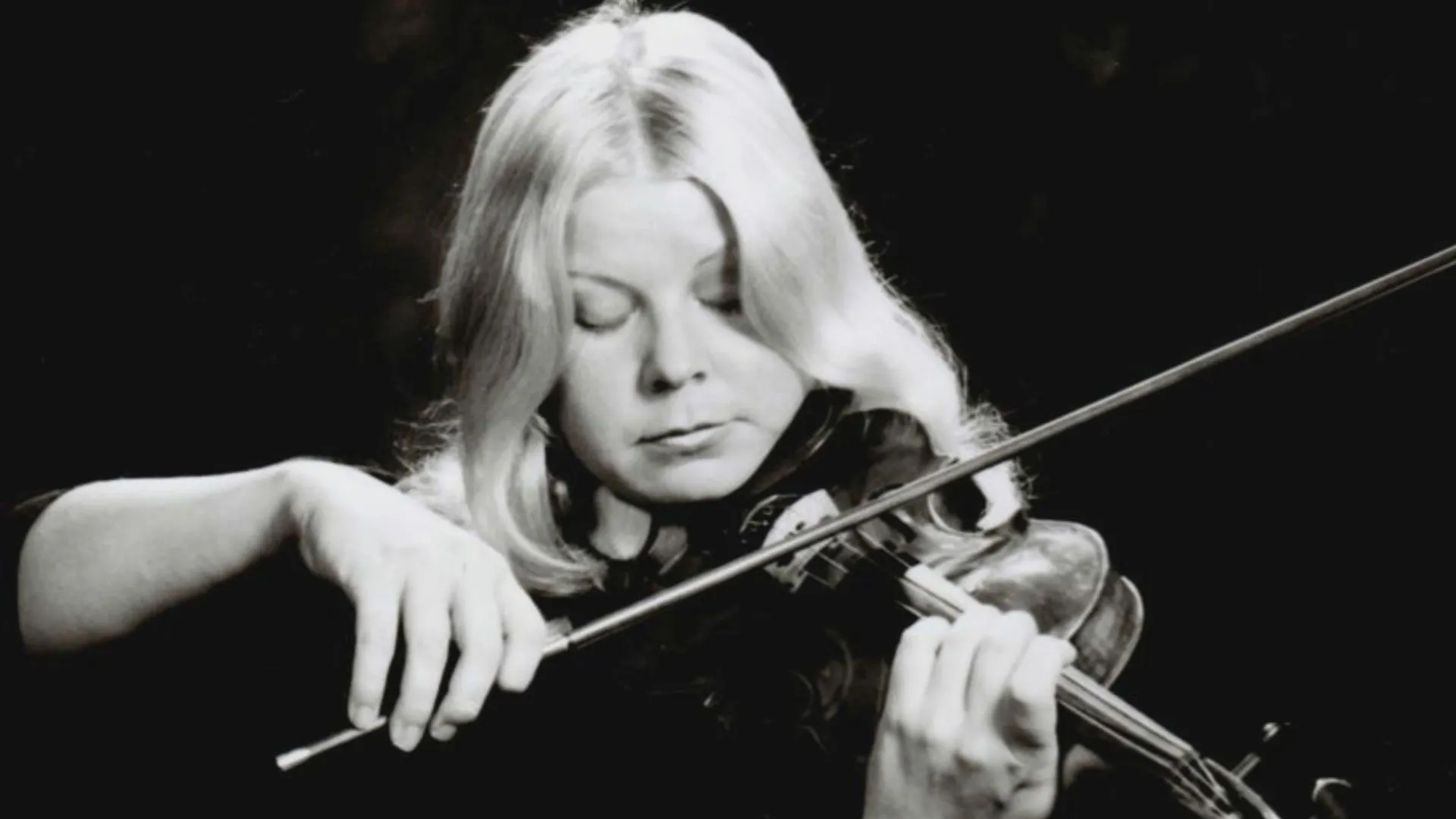
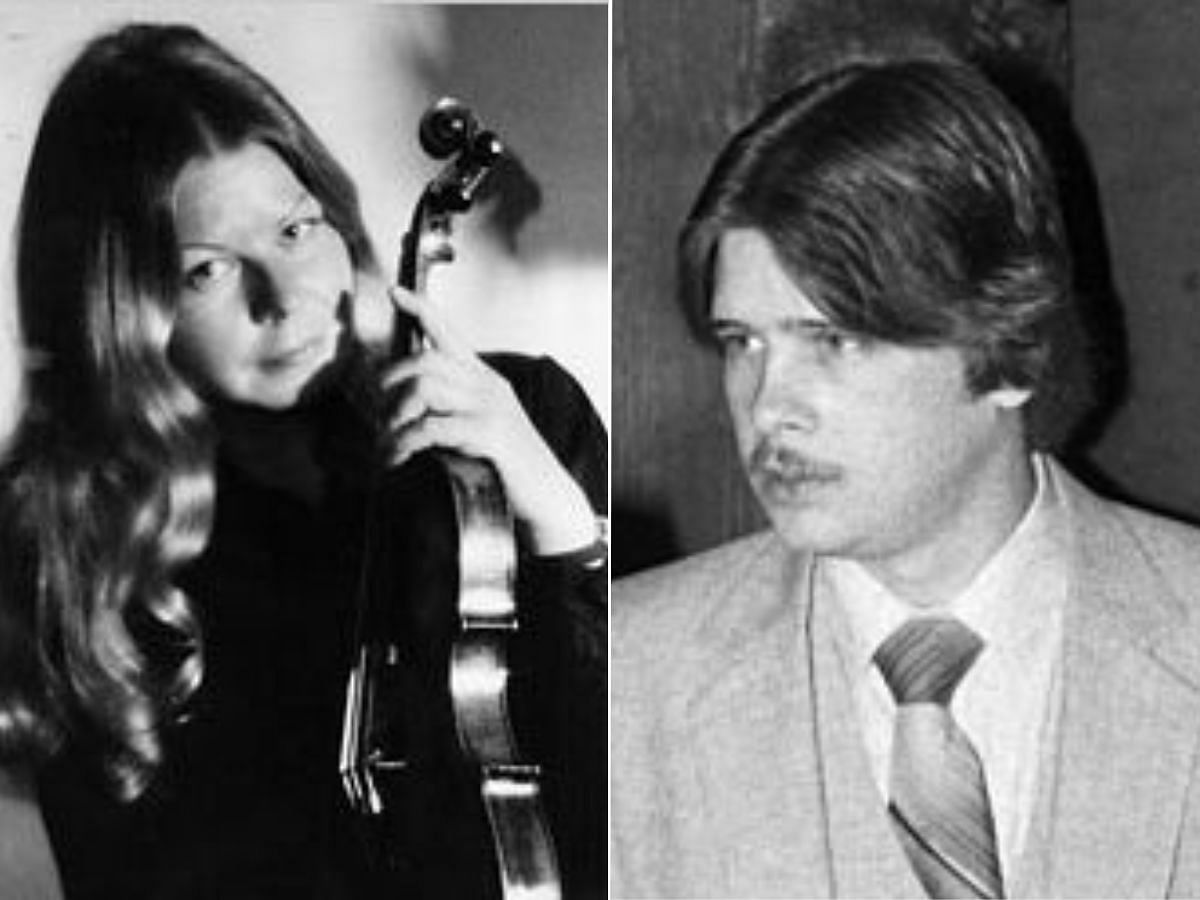
Tragic tale of top violinist who vanished mid-performance at New York’s Met Opera House
11 January 2022, 13:58 | Updated: 12 January 2022, 16:50
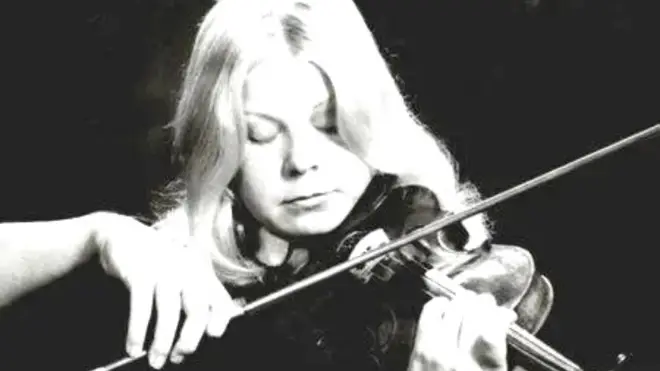
‘Murder at the Met’ is the second episode of Oxygen’s new true-crime documentary series, ‘New York Homicide’ and tells the story of a young violinist who disappeared from the orchestra pit during a performance at the Metropolitan Opera House 42 years ago.
Listen to this article
On 23 July 1980, the curtain rose on the Berlin Ballet, who were guest performing at New York’s legendary Metropolitan Opera House.
Amid the orchestra that night sat a 30-year-old violinist, Helen Hagnes Mintiks. A Juilliard graduate, Mintiks was an award-winning performer, who had made her professional solo debut with the Seattle Symphony while still a teenager.
The programme for that night of the Berlin Ballet’s 11-day residency at the Met was a four parter; Stravinsky’s The Firebird, Piazzolla’s Five Tangos, Ludwig Minkus’s Don Quixote, and Miss Julie by Ture Rangström.
After playing Stravinsky’s score, the orchestra, including Mintiks left the stage as Five Tangos used pre-recorded music, so the musicians used the 45 minute-long ballet to take a break.
However, when the orchestra was summoned back at 9.30pm to perform Don Quixote, there was an empty chair in the violin section, belonging to Mintiks.
Read more: Tragedy at Moscow’s Bolshoi Theatre as actor killed on stage during opera performance

The search for Helen Mintiks
At 11.30pm once the show had ended, Mintiks was still missing. Friends were concerned as they knew she wouldn’t have left the building without her violin, which she had left on her chair after the first work of the night.
The authorities were contacted, and after looking through her locker and realising the clothes she had travelled to the venue in were still there, surmised she must still be in the building.
Police searched the building, and at 8.30am the following morning, found Mintiks’s body. She had been thrown from the Met’s sixth-story roof into a ventilation shaft. Her body had fallen 30 to 45 feet and she had died some time between 9pm to 11.30pm that night.
In light of the discovery, a police spokesperson said that a team of 25 detectives would interview every Met employee – over 800 staff – in the next 24 hours.
After a day-long autopsy, the New York chief medical examiner concluded that the death was “the result of a fall”, and that Mintiks was alive when she was thrown from the roof.
She was found bound and blindfolded, and due to the knots tied, authorities were able to link this technique back to the Met’s stagehands. This tied in with the police’s theory that the killer was familiar with the Met’s maze-like backstage area.
Read more: The opera that killed its star – the eerie story of how Leonard Warren died on stage
A witness told the authorities that this was untrue, as the dancers were all on ground level, and it was suggested that Crimmins had made up this fact to get the young violinist alone in an elevator with him.
Crimmins had also been missing for his cue when Mintiks failed to return to her seat.
After bringing the stagehand in for questioning multiple times, Crimmins confessed to the murder of Mintiks.
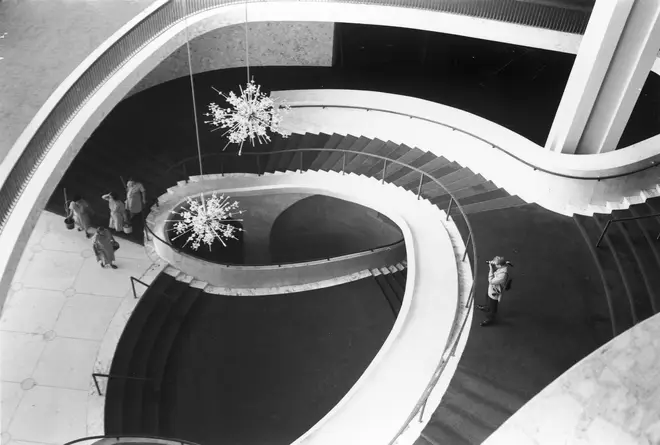
In 1981, Crimmins was sentenced to 20 years to life in prison for the murder and attempted rape of Helen Hagnes Mintiks.
Crimmins has attempted to apply for parole every two years since 2000, but has been denied each time, due to the severity of his crime. Sources suggest he is next able to apply for parole in 2022.
Read more: Case Notes: the award-winning true crime podcast from Classic FM
Mintiks was well spoken of by her friends. One friend, Kerry Voight, told the Washington Post at the time of her death that, “Helen was the kind [of person] who would come to your house for dinner and bring along the ‘dinner’.”
She was survived by her husband, the late sculptor Janis Mintiks, who would go on to sue the Met Opera after his wife’s death.
Unfortunately Mintiks would not be the last fatality at the Metropolitan Opera House.
Other incidents include the 1996 on-stage death of tenor Richard Versalle, who died while playing the role of Vitek during a production of Leoš Janáček’s The Makropulos Case, and the 1988 suicide of operagoer, Bantcho Bantchevsky.
You can watch the full episode of Murder at the Met: New York Homicide on Oxygen. https://www.classicfm.com/artists/new-york-met/violinist-helen-mintiks-murder-opera-house/
Remembering Violinist Helen Hagnes, 40 Years After Her Murder at the Met

Violinist Helen Hagnes.
On the evening of July 23, 1980, I was one of the violinists in the pit of New York’s Metropolitan Opera House. The Berlin Ballet was in town with guest artists Galina Panov, Valery Panov, and Rudolf Nureyev. The program that Wednesday evening was Firebird, Five Tangos, Don Quixote, and Miss Julie.
We played Firebird, then left the pit for a long interval — Five Tangos used music by Astor Piazzolla that did not involve us. Like most of the musicians, I headed to the canteen, grabbed a coffee, and hung out in the backstage labyrinth.
Going back into the pit for Don Quixote, we awaited the close succession of the rising magnificent Metropolitan Opera house chandeliers, lowered lights, hushed audience, closing of the pit door, and finally the “A” from the oboe.
For perhaps a minute, it was not strange that Helen Hagnes, the violinist sitting in front of me, was not yet there. But as the moments slipped by, we kept turning our heads around toward the door. No Helen. Concerned that she had suddenly fallen ill, I took her violin, which she’d left on her chair, and put it in its case outside the pit. The act began.
To say that it was “strange” that she was nowhere to be found even after the performance sounds oddly passive, but I don’t know what other word to use, because any scenario such as what had actually happened was unthinkable, especially in the fortress that is the Metropolitan Opera House. As efforts to contact her began, I walked the ten blocks north along Broadway to my small apartment on West 75th Street, the same street on which Helen lived, one block east.
The police found Helen’s body at 8:30 the next morning, July 24.
(editor: Here is more about what happened to her: she had been murdered – tied up, gagged, and thrown down a six-story air shaft.)
That afternoon we were back at the Met for individual interviews by the police, followed by an 8 PM downbeat for Valery Panov’s ballet “The Idiot,” based on the novel by Dostoevsky. The ballet’s first terrifying notes, taken from Shostakovich’s symphonies, sent a chill through the shell-shocked orchestra. In the third act of the ballet, the heroine, Nastasya Filippovna, is murdered.
* * *
This July 23 is the fortieth anniversary of that terrible night at the Metropolitan Opera House.
Helen was one of those colleagues with whom I frequently worked but had never gotten to know well. My earliest memory of her was a decade earlier, in 1970, at the Spoleto Festival dei Due Mondi in Italy.

Above, Spoleto, Italy, 1970: Tom Suárez and Helen Hagnes, a screen-grab from a film from Luciano Berio’s series, C’è Musica e Musica, in which we were being interviewed by Radiotelevisione italiana during the Festival dei due Mondi
She was the youngest of three sisters raised on a poultry farm in Aldergrove, British Columbia, where her Swedish parents had emigrated from Finland. She was married to the late Janis Mintiks, a sculptor. Helen’s sister, Delcie Hill, described Helen’s early years to the Associated Press: Their parents put a great deal of time and effort and money they didn’t have into Helen’s music, and for eight years, until she was 19, Helen was taken by the family truck to Vancouver for violin lessons. She had already soloed with the Seattle Symphony before she left Canada to enroll at Julliard, where she completed a bachelor’s and a master’s degree. After continuing studies in Italy and Switzerland, she moved back to New York to study with Nathan Milstein.
One day during Helen’s Juilliard years, she and pianist Judith Olson passed each other in the hallway and started chatting. Not only were they both of Scandinavian background, but Judith had also grown up on a farm. They quickly became inseparable. Their friendship widened to close musical collaboration, playing many recitals and embarking on two cruises organized by academics from Harvard and Yale.
Not long before Helen’s murder, Judith herself had narrowly escaped a parallel fate. In the elevator of the building I had years earlier frequented for lessons with Ivan Galamian, Judith, there to rehearse the Walton violin concerto with Kyung Wha Chung, was attacked in the elevator and forced to the roof, eerily mirroring what would happen to Helen.
Helen’s body was discovered too late for the crime to be in the morning’s papers. Friends tried to reach Judith by phone — landline in those days, of course — but missed her. The following morning, the 25th, she opened her apartment door to collect the day’s New York Times, saw Helen’s picture in the lower-right of the front page, and fell to the floor.

When on Tuesday, July 29, Judith gave the eulogy for Helen at Manhattan’s St. Peter’s Lutheran Church, her grief was spiked with terror — terror that the killer was selective, serial, and present. More than a month would pass before Metropolitan Opera employee Craig Crimmins, then 21, was arrested and, ultimately, convicted.
Helen was neat and tidy — “domestic”, as Judith puts it — in contrast to Judith. She described both of them as “gigglers”, shorthand for the great fun they had together. When on the high seas they were supposed to participate in the ship’s costume party but had no costumes, they surveyed their room and scavenged its sparse provisions for “props”. The violin-piano duo attended the party as shower and shower-ee, Judith the shower and shower curtain, Helen wrapped in a towel under the “spigot“, complete with beer can hair curlers. (They won first prize.)
On that performing voyage, Helen, whose convictions included reincarnation, came face-to-face with what she had long believed to be home in her distant past: Egypt. So profound was her sense that in this land lay her ancient roots, that she made Janis promise that he would bring her ashes to rest there if anything were to happen to her.
Suddenly faced with that reality, Janis sought a way to honor her wish despite lacking funds and the relevant logistical knowledge. So he wrote to Egyptian president Anwar Sadat. Sadat arranged flights for Janis and Helen’s ashes.
Helen’s wish was fulfilled.

Judith Olson today, holding a photo of her and Helen in Istanbul, mid 1970s
https://www.violinist.com/blog/cattigara/20207/28370/
23 JULY 2020
On 23 July 1980, the violinist Helen Hagnes was murdered in the Metropolitan Opera House. 40 years on, her former colleague Thomas Suárez remembers that night
On 23 July 1980, 30-year-old Helen Hagnes left her violin on her chair at the Metropolitan Opera House in New York City and got up to stretch her legs during the performance’s interval. She never returned. The next day, Hagnes’s body was found inside a ventilation shaft on the third floor of the opera house by a maintenance employee. She was naked, her hands bound and mouth gagged. Forensics showed that she had been killed during the second half of the performance. In this article, Hagnes’s former colleague Thomas Suárez recalls the night of her murder.
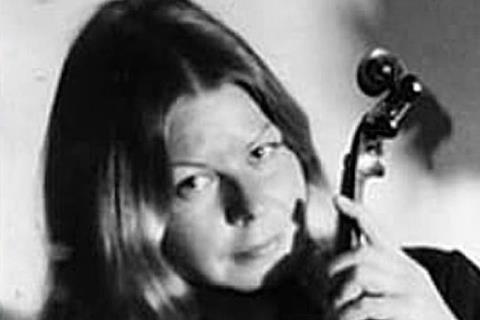
On the evening of 23 July, 1980, I was one of the violinists in the pit of New York’s Metropolitan Opera House. The Berlin Ballet was in town with guest artists Galina Panov, Valery Panov, and Rudolf Nureyev. The programme that Wednesday evening was Firebird, Five Tangos, Don Quixote, and Miss Julie.
We played Firebird, then left the pit for a long interval — Five Tangos used music by Astor Piazzolla that did not involve us. Like most of the musicians, I headed to the canteen, grabbed a coffee, and hung out in the backstage labyrinth.
Going back into the pit for Don Quixote, we awaited the close succession of the rising magnificent Metropolitan Opera house chandeliers, lowered lights, hushed audience, closing of the pit door, and finally the ‘A’ from the oboe.
For perhaps a minute, it was not strange that Helen, the violinist sitting in front of me, was not yet there. But as the moments slipped by, we kept turning our heads around toward the door. No Helen. Concerned that she had suddenly fallen ill, I took her violin, which she’d left on her chair, and put it in its case outside the pit. The act began.
To say that it was ’strange’ that she was nowhere to be found even after the performance sounds oddly passive, but I don’t know what other word to use, because any scenario such as what had actually happened was unthinkable, especially in the fortress that is the Metropolitan Opera House. As efforts to contact her began, I walked the ten blocks north along Broadway to my small apartment on West 75th Street, the same street on which Helen lived.
The police found Helen’s body at 8:30 the next morning, 24 July.
In the afternoon we were back at the Met for individual interviews by the police, followed by an 8pm downbeat for Valery Panov’s ballet “The Idiot”, based on the novel by Dostoevsky. The ballet’s first terrifying notes, taken from Shostakovich’s symphonies, sent a chill through the shell-shocked orchestra. In the third act of the ballet, the heroine, Nastasya Filippovna, is murdered.
Although in their early search for Helen’s killer, the police considered all possibilities, efforts focused on the building’s stage hands because of a specialist knot that had been used to bind her.
This July 23 is the fortieth anniversary of that terrible night at the Metropolitan Opera House.
Helen was one of those colleagues with whom I frequently worked but had never gotten to know well. My earliest memory of her was a decade earlier, in 1970, at the Spoleto Festival dei Due Mondi in Italy.
She was the youngest of three sisters raised on a poultry farm in Aldergrove, British Columbia, where her Swedish parents had emigrated from Finland. She was married to the late Janis Mintiks, a sculptor.
Helen’s sister, Delcie Hill, described Helen’s early years to the Associated Press: Their parents put a great deal of time and effort and money they didn’t have into Helen’s music, and for eight years, until she was 19, Helen was taken by the family truck to Vancouver for violin lessons. She had already soloed with the Seattle Symphony before she left Canada to enroll at Julliard, where she completed a bachelor’s and a master’s degree. After continuing studies in Italy and Switzerland, she moved back to New York to study with Nathan Milstein.
One day during Helen’s Juilliard years, she and pianist Judith Olson passed each other in the hallway and started chatting. Not only were they both of Scandinavian background, but Judith had also grown up on a farm. They quickly became inseparable. Their friendship widened to close musical collaboration, playing many recitals and embarking on two cruises organized by academics from Harvard and Yale.
Not long before Helen’s murder, Judith herself had narrowly escaped a parallel fate. In the elevator of the building I had years earlier frequented for lessons with Ivan Galamian, Judith, there to rehearse the Walton violin concerto with Kyung Wha Chung, was attacked in the elevator and forced to the roof, eerily mirroring what would happen to Helen.
Helen’s body was discovered too late for the crime to be in the morning’s papers. Friends tried to reach Judith by phone — landline in those days, of course — but missed her. The following morning, the 25th, she opened her apartment door to collect the day’s New York Times, saw Helen’s picture in the lower-right of the front page, and fell to the floor.
When on Tuesday, July 29, Judith gave the eulogy for Helen at Manhattan’s St. Peter’s Lutheran Church, her grief was spiked with terror — terror that the killer was selective, serial, and present. More than a month would pass before Metropolitan Opera employee Craig Crimmins, then 21, was arrested and, ultimately, convicted.
Judith described both of them as ‘gigglers’, shorthand for the great fun they had together. When on the high seas they were supposed to participate in the ship’s costume party but had no costumes, they surveyed their room and scavenged its sparse provisions for ’props’. The violin-piano duo attended the party as shower and shower-ee, Judith the shower and shower curtain, Helen wrapped in a towel under the ‘spigot’, complete with beer can hair curlers. (They won first prize.)
On that performing voyage, Helen, whose convictions included reincarnation, came face-to-face with what she had long believed to be home in her distant past: Egypt. So profound was her sense that in this land lay her ancient roots, that she made Janis promise that he would bring her ashes to rest there if anything were to happen to her.
Suddenly faced with that reality, Janis sought a way to honor her wish despite lacking funds and the relevant logistical knowledge. So he wrote to Egyptian president Anwar Sadat. Sadat arranged flights for Janis and Helen’s ashes.
Helen’s wish was fulfilled.
https://www.thestrad.com/playing-hub/remembering-helen-hagnes-after-40-years/10938.article
Ermittler berichten von den schockierendsten Verbrechen New Yorks: Eine Geigerin hat einen Auftritt im ehrwürdigen Metropolitan Opera House. Nach der Pause wartet das Publikum auf die Violinistin, die jedoch nie wieder zurückkehren wird.
https://www.joyn.de/serien/new-york-homicide/1-2-mord-in-der-met
Du hast das Land verlassen?
Wir können dich leider nur begrenzt begleiten, denn Joyn ist im Ausland nur begrenzt nutzbar. Hier erfährst du mehr dazu.
Joyn+ bietet dir innerhalb der EU und dem EWR mehr Möglichkeiten. Beachte: Aus lizenzrechtlichen Gründen ist Joyn+ nur für Kunden mit Wohnsitz in Deutschland nutzbar und es kann in einzelnen Fällen zu weiteren Einschränkungen kommen.
Hoppla! Da ist etwas schief gelaufen.
Aus Lizenzgründen kannst du das in Niederlande nicht anschauen.
Murder at the Met: Who Killed Violinist During Intermission?
The Metropolitan Opera House in New York City is one of the most prestigious cultural institutions in the world. In the early 1980s, it was a beacon of elegance standing tall in a city overrun by crime and chaos. But one terrible summer night, that crime and chaos found its way inside the Met. A violinist named Helen Hagnes Mintiks went missing during a performance and was found murdered in an air shaft in the building the next day. InsideEdition.com’s Sal Bono has more
Violinist Helen Hagnes Mintiks Murderer: Where Is Craig Crimmins Now?
Craig Crimmins got sentenced to twenty years of life in prison on September 2, 1981, where he has been serving more than thirty-five years in prison on twenty years of a life sentence for murder.
Tracking down information from some other source, he has been still in prison as of 2014. Further, there has been no news of his release from prison since 2014. In particular, he was in the Auburn correctional facility in Auburn, New York.
In addition, his attorney has been claiming that he has turned into a different person, and he wants to restart his new life with a different perspective. On the other hand, the public has suggested that he should not get out of prison for what he had done. https://showbizcorner.com/craig-crimmins-released-on-parole-violinist-helen-hagnes-mintiks-murder-now
